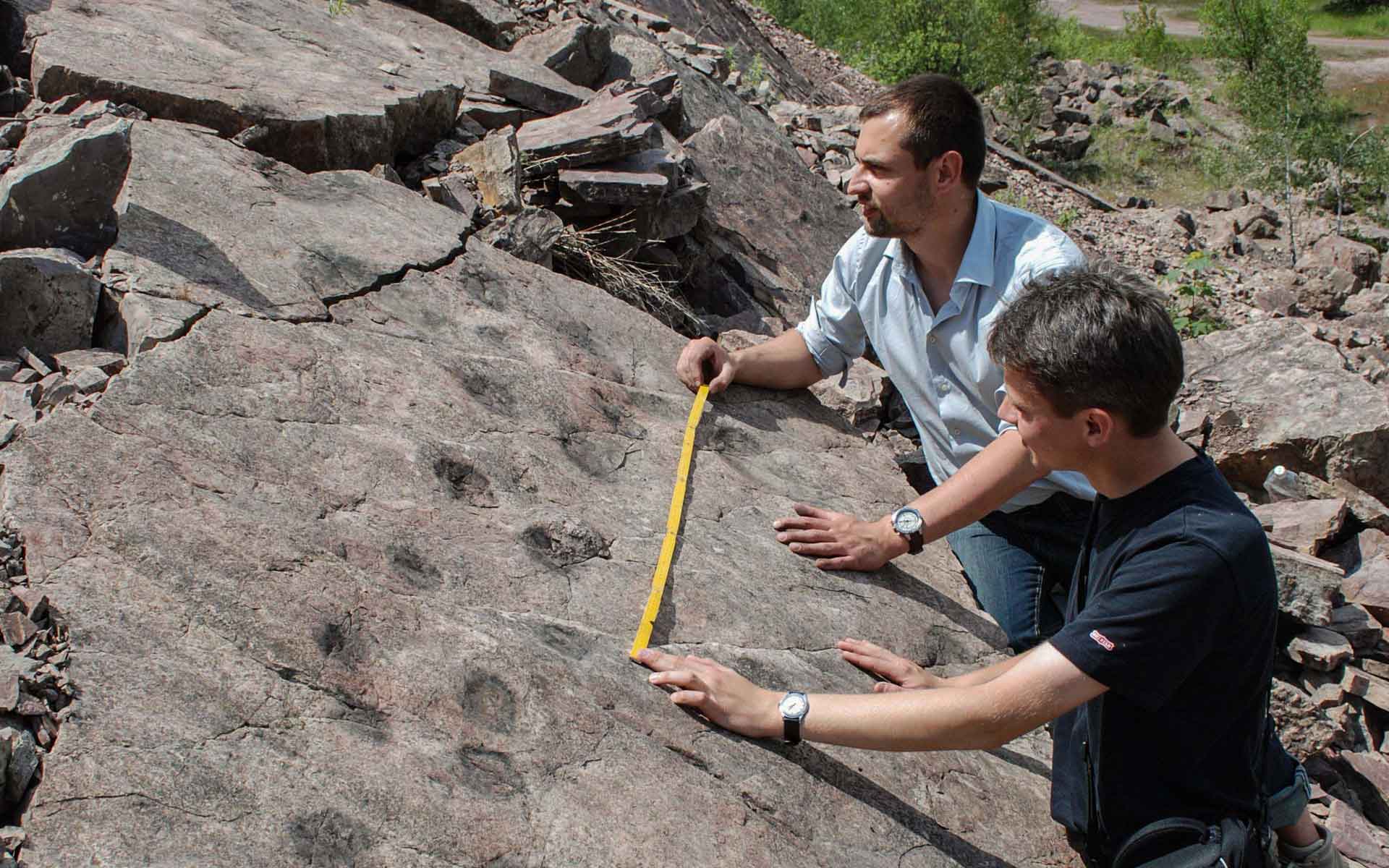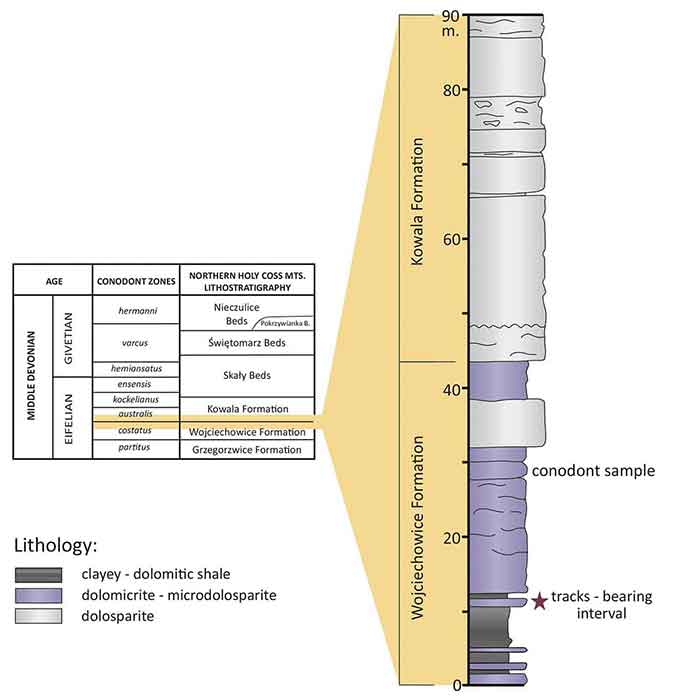
Surface of dolomite bed with preserved tetrapod’s footprints in Zachelmie Quarry (Photo: Hodbod M.).
Geological Period
Middle Devonian
Main geological interest
Location
Zachelmie Quarry, Holy Cross Mountains, Poland.
50°58’10.0″N, 20°41’27.0″E
Surface of dolomite bed with preserved tetrapod’s footprints in Zachelmie Quarry (Photo: Hodbod M.).
The oldest known fossil tetrapod tracks on land.
The earliest known tetrapods body fossils date to the Late Devonian. Well-preserved and securely dated tetrapod tracks of early Middle Devonian rocks have been found in Zachelmie Quarry (Poland). These tetrapod tracks are the oldest in the world and suggest that tetrapods evolved 18 million years earlier than indicated by the oldest body fossils. The site documents the transition of life from water to land – a momentous turning point in evolution, and it provides the oldest reliably dated evidence of tetrapods moving over land during the early Eifelian.
- Geological description
The Middle Devonian Wojciechowice Formation crops out in Zachelmie quarry in the Holy Cross Mountains. It is a dolomite that was deposited in a transitional lacustrine to marginal-marine environment in a broad shallow carbonate platform. A set of tracks, interpreted as those of tetrapods, occur on bedding planes in the dolomite (Niedzwiedzki et al., 2010). Conodonts of the costatus Zone are evidence that the trackway bed in the Wojciechowice Formation correlates with the lowest Eifelian Stage (Niedzwiedzki and Szrek, 2020), indicating that the tetrapod tracks were made approximately 18 million years earlier than the oldest known body fossils of tetrapods. The tracks were made by several individuals of a four-limbed species. The shape of the tracks suggests the presences of toes. Their size and shape indicated flat-bodied, lizard-like creatures up to 2.5 meters long. The geological context indicates that land dwelling animals might have evolved from a shallow marine environment.
- Scientific research and tradition
The trackways were first described in Nature in 2010 (Niedzwiedzki et al., 2010). After the discovery new results of research on the local sedimentation environment have been presented in several new publications (Narkiewicz et al., 2015; Jaworska, 2017; Niedzwiedzki and Szrek, 2020).
- Reference
Jaworska, J. (2017) ‘Casts of halite crystals in the Devonian dolomites of the Zachełmie Quarry’, Salt Review, 13, pp. 135–140.
Narkiewicz, M. et al. (2015) ‘Palaeoenvironments of the Eifelian dolomites with earliest tetrapod trackways (Holy Cross Mountains, Poland)’, Palaeogeography, Palaeoclimatology, Palaeoecology, 420, pp. 173–192. Available at: https://doi.org/10.1016/j.palaeo.2014.12.013.
Niedźwiedzki, G. et al. (2010) ‘Tetrapod trackways from the early Middle Devonian period of Poland’, Nature, 463(7277), pp. 43–48. Available at: https://doi.org/10.1038/nature08623.
Niedźwiedzki, G. and Szrek, P. (2020) ‘Non-tetrapod trace fossils from the Middle Devonian tetrapod tracksite at Zachełmie Quarry, Holy Cross Mountains, Poland’, Palaeogeography, Palaeoclimatology, Palaeoecology, 553, p. 109763. Available at: https://doi.org/10.1016/j.palaeo.2020.109763.
- Author(s)
Izabela Olczak-Dusseldorp
Department of Environmental Geology – Polish Geological Institute – National Research Institute 4, Warsaw, Poland
Szymon Ostrowski
Department of Engineering Geology – Polish Geological Institute – National Research Institute 4, Warsaw, Poland


